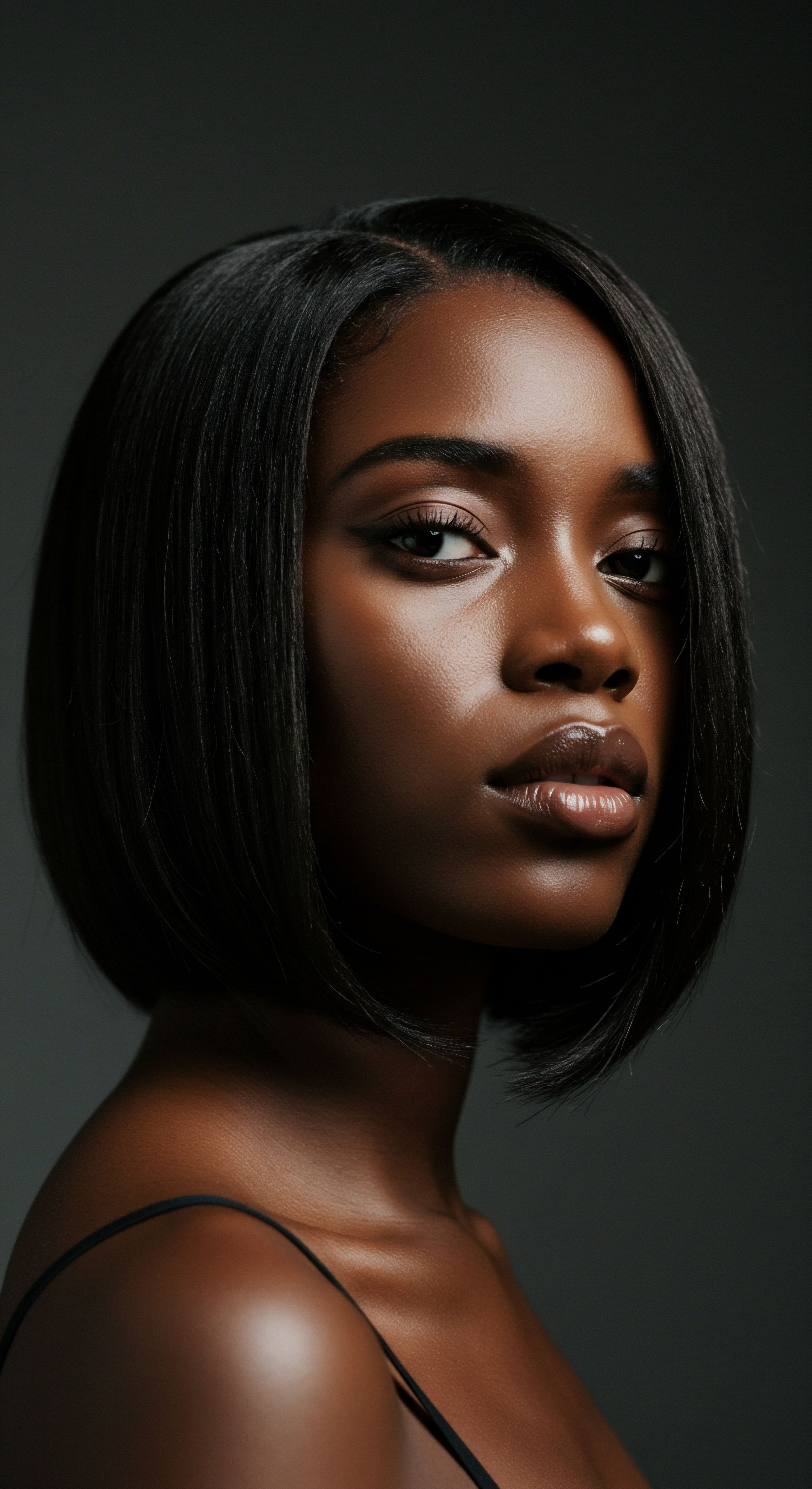
Roots
Consider the quiet whispers of the wind through ancient trees, carrying stories of generations past. Much like those deep-rooted sentinels, our hair stands as a testament to lineage, culture, and individual spirit. It is not merely a collection of protein strands; it is a living chronicle, bearing the subtle imprints of heritage and the vibrant declarations of self.
To gaze upon a coil, a wave, or a kink is to glimpse a legacy, a personal narrative that stretches far beyond the present moment. This intimate connection between what grows from our scalp and how we perceive ourselves is a profound dance, one that has been choreographed over centuries by collective practices and individual experiences.
Understanding this connection requires a gentle descent into the very structure of textured hair, recognizing its distinct characteristics and the specialized language that helps us speak of its unique beauty. From the microscopic architecture of the follicle to the grand sweep of its growth cycle, every detail contributes to the vibrant story hair tells about us, and the stories we, in turn, tell about ourselves through our hair.
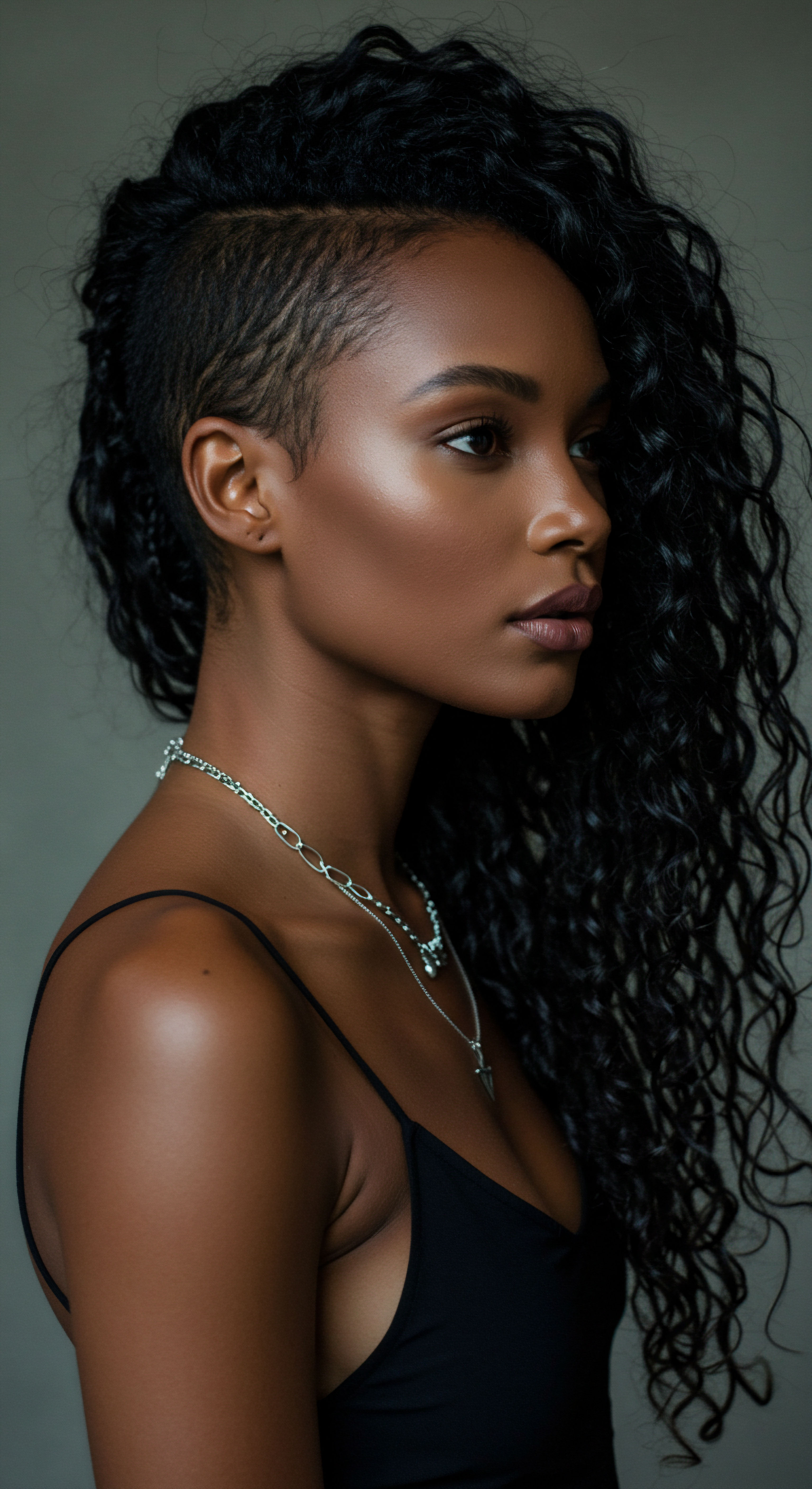
Hair Anatomy Specific to Textured Hair
The visible beauty of textured hair stems from an intricate design at its core, a design distinct from straighter hair types. At the heart of this difference lies the Follicle, the tiny organ within the scalp from which each strand grows. For textured hair, this follicle is typically oval or elliptical in shape, rather than perfectly round. This unique follicular geometry causes the hair shaft to grow in a curved or helical path, resulting in the characteristic coils, curls, and waves we admire.
The curvature of the hair strand itself dictates the distribution of Keratin, the primary protein composing hair. In highly coiled strands, keratin tends to be unevenly distributed along the curve, which can make certain points of the strand more susceptible to breakage. This structural particularity means that textured hair, while resilient, often requires a different approach to hydration and handling compared to hair with a rounder cross-section.
The cuticle, the outermost protective layer of the hair shaft, also behaves differently. Its scales, which typically lie flat in straight hair, may be more lifted in textured strands, contributing to a greater propensity for moisture loss and, at times, a delightful, cloud-like volume.
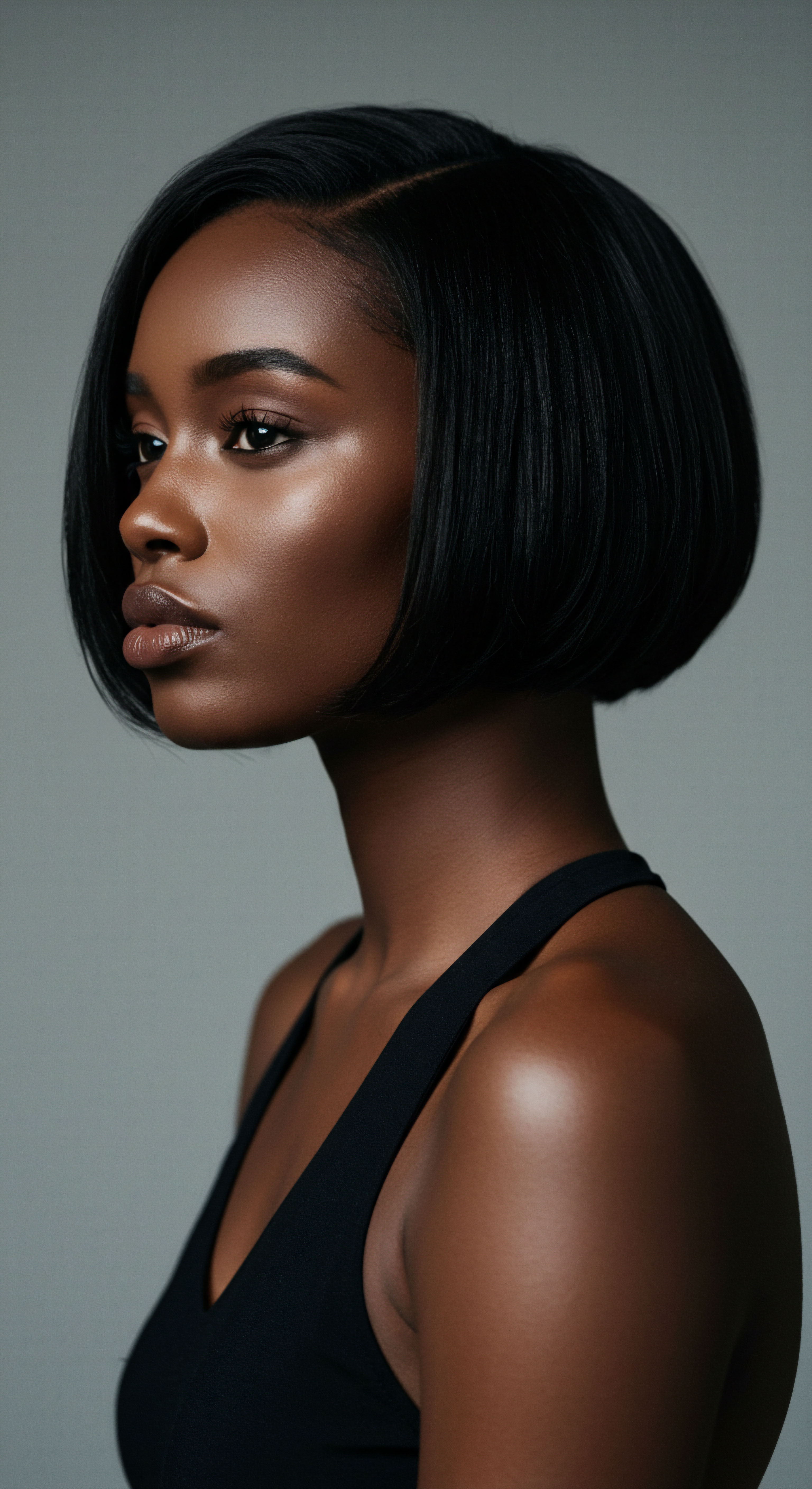
Textured Hair Classification Systems
To better understand and care for the diverse range of textured hair, various classification systems have emerged. While no single system perfectly captures the infinite variations, they offer a useful framework for identifying general patterns and informing appropriate care. The most widely recognized system categorizes hair into types ranging from 1 (straight) to 4 (coily), with sub-classifications for different degrees of wave, curl, or coil.
- Type 2 Hair ❉ Generally wavy, forming a loose ‘S’ shape. It tends to lie closer to the head than curlier types.
- Type 3 Hair ❉ Characterized by distinct curls that form a noticeable ‘S’ or ‘Z’ pattern. These curls can range from loose, bouncy spirals to tight, springy ringlets.
- Type 4 Hair ❉ Known for its tightly coiled patterns, often forming small, dense curls or zig-zags from the scalp. This hair type can appear quite dense and is often prone to significant shrinkage when wet.
Within each type, further distinctions exist based on the diameter of the curl or coil. These classifications, while helpful for communication and product selection, serve as guides, not rigid definitions. The true wonder lies in the individual expression of each strand, a unique blend of genetic inheritance and environmental influences.
Our hair, from its deepest root to its visible curl, holds a silent dialogue with our past, present, and the unfolding story of who we are.
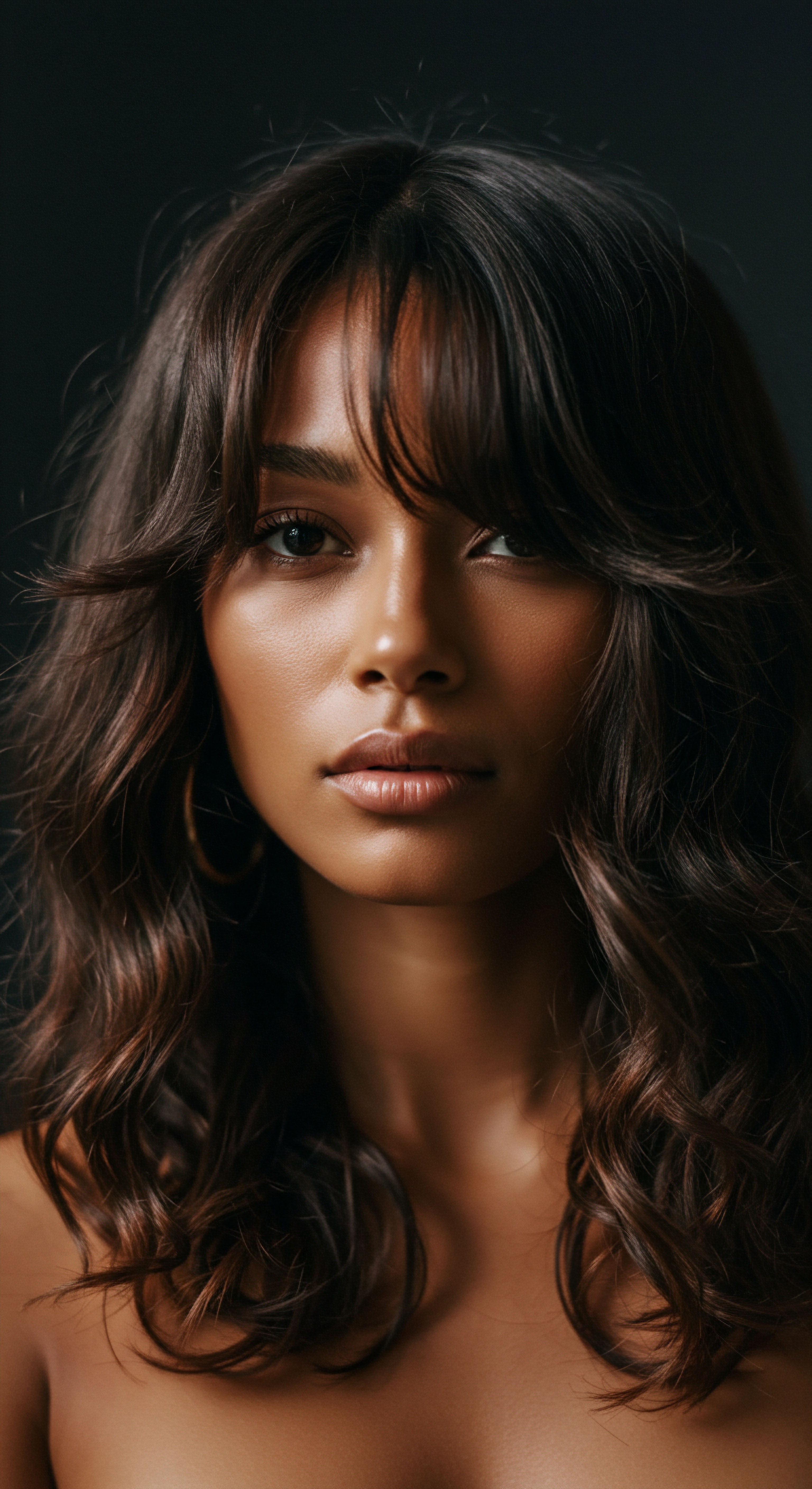
The Essential Lexicon of Textured Hair
A shared vocabulary enriches our understanding and appreciation of textured hair. Beyond the numerical classifications, terms like Porosity describe hair’s ability to absorb and retain moisture, a crucial factor in choosing products. High porosity hair, with its more open cuticles, readily absorbs water but also loses it quickly, often requiring heavier emollients. Low porosity hair, conversely, has tightly closed cuticles, making it resistant to water penetration but excellent at holding moisture once absorbed.
Density refers to the number of individual hair strands on the scalp, impacting how full hair appears. Elasticity measures hair’s ability to stretch and return to its original state without breaking, indicating its health and strength. A healthy strand possesses good elasticity, springing back when gently pulled.
These terms, far from being mere technical jargon, form the language through which we connect with our hair, deciphering its needs and celebrating its unique qualities. They grant us the ability to speak with precision about our hair’s specific attributes, moving beyond generic descriptions to a more intimate discourse.

Hair Growth Cycles and Influencing Factors
Hair growth follows a cyclical pattern, a fascinating biological rhythm that impacts how our hair behaves and how we care for it. This cycle consists of three main phases:
- Anagen (Growth Phase) ❉ This is the active period of growth, lasting anywhere from two to seven years. During this time, hair cells divide rapidly, pushing the strand longer.
- Catagen (Transition Phase) ❉ A brief, transitional period lasting about two to three weeks. Growth stops, and the hair follicle shrinks.
- Telogen (Resting Phase) ❉ Lasting around two to four months, during which the hair rests before eventually shedding. A new hair typically begins to grow in the same follicle as the old one prepares to fall out.
Several factors can influence these cycles, from genetics and nutrition to stress and hormonal shifts. For textured hair, understanding these cycles is particularly relevant for managing length retention, as the natural curl pattern can make it appear shorter than it truly is, and breakage can obscure actual growth. A balanced diet, adequate hydration, and gentle handling all contribute to supporting a healthy growth cycle, allowing each strand to flourish in its natural rhythm. The inherent qualities of our hair, from its follicular shape to its growth patterns, form the very foundation upon which cultural practices and personal perceptions are built.

Ritual
Stepping from the foundational understanding of hair’s very being, we now approach the daily and periodic practices that shape our hair’s story. These are not merely routines; they are Rituals, imbued with intention and often echoing practices passed down through generations. The way we cleanse, condition, and adorn our hair becomes a dialogue with its inherent qualities, a conscious act of care that extends beyond physical maintenance into the realm of personal expression and collective identity. This section invites a closer look at the art and science behind styling textured hair, recognizing that every twist, braid, or adornment is a deliberate choice, reflecting both practical wisdom and a profound connection to self.
The daily act of tending to textured hair is a testament to resilience and creativity. From intricate protective styles that guard delicate strands to techniques that celebrate natural definition, each method serves a purpose. The tools we select, the products we apply, and the hands that perform these actions all contribute to a rich tapestry of self-care and cultural affirmation.

Protective Styling Encyclopedia
Protective styles hold a special place in the care of textured hair, serving as guardians against environmental stressors and manipulative styling. These styles minimize daily handling, helping to preserve length and reduce breakage. From classic Braids and Twists to more elaborate installations, the choice of protective style often carries historical weight and cultural significance.
- Box Braids ❉ Individual braids created by dividing hair into square-shaped sections. They offer versatility and can last for weeks, providing a long-term protective option.
- Cornrows ❉ Braids that lie flat against the scalp, following specific patterns. These are foundational to many traditional African hairstyles and continue to be a popular, low-maintenance choice.
- Twists ❉ Similar to braids but using two strands of hair wound around each other. They are often gentler on the hair and can be easily undone for detangling and moisturizing.
The longevity of a protective style can significantly reduce the need for daily manipulation, thereby limiting potential damage. The artistry involved in creating these styles, often a communal activity, strengthens bonds and transmits knowledge across generations. The decision to wear a protective style is often a blend of practicality and personal statement, reflecting a desire for hair health while honoring cultural traditions.

Natural Styling and Definition Techniques
Celebrating textured hair in its unadorned state is a powerful act of self-acceptance and beauty. Natural styling techniques aim to enhance the hair’s inherent curl, coil, or wave pattern, allowing its unique structure to shine. Techniques like the Wash and Go involve cleansing, conditioning, and applying styling products to define the natural pattern, allowing it to air dry or diffuse.
Other methods, such as Twist-Outs and Braid-Outs, involve twisting or braiding damp hair and allowing it to dry, then carefully unraveling the strands to reveal elongated, defined waves or curls. These methods offer a softer, more voluminous look than direct wash and gos. The selection of products, from hydrating creams to curl-defining gels, plays a pivotal role in achieving desired results, ensuring moisture retention and minimizing frizz while enhancing the hair’s natural form. The journey to discovering one’s preferred natural styling technique is often one of experimentation and joyful discovery, a personal dialogue with the hair’s intrinsic rhythm.
Each twist, braid, or chosen adornment transforms hair care into a meaningful act of self-expression and cultural connection.

Wigs and Hair Extensions Mastery
Wigs and hair extensions offer incredible versatility and creative freedom, allowing for dramatic transformations and protective benefits. For centuries, various cultures have used supplemental hair for adornment, status, or practical reasons. Today, their usage spans from fashion statements to solutions for hair health concerns.
Wigs, whether synthetic or human hair, provide a complete change of look without altering one’s natural hair. They offer a protective shield for the underlying hair, allowing it to rest and grow. Extensions, which can be braided in, sewn in, or bonded, add length, volume, or even color to existing hair. The mastery of these techniques lies not only in their aesthetic application but also in ensuring the health of the natural hair beneath.
Proper installation, maintenance, and removal are paramount to prevent tension, breakage, or scalp irritation. The use of wigs and extensions, therefore, transcends mere aesthetics, becoming a tool for self-reinvention, protection, and cultural play.

Heat Styling and Thermal Reconditioning with a Safety-First Approach
While the natural beauty of textured hair is celebrated, heat styling offers another avenue for versatility, allowing for temporary straightening or specific curl patterns. Tools like flat irons, curling wands, and blow dryers can temporarily alter the hair’s hydrogen bonds, resulting in a smoother appearance. However, a Safety-First Approach is non-negotiable. Excessive or improper heat application can lead to irreversible damage, known as heat damage, which permanently alters the hair’s protein structure and curl pattern.
This damage manifests as limp, straight, or brittle strands that have lost their natural elasticity. To mitigate this risk, the use of heat protectants is essential. These products form a barrier around the hair shaft, distributing heat more evenly and minimizing direct thermal impact. Low heat settings, fewer passes with styling tools, and infrequent heat application are also critical.
For those considering more permanent alterations, such as thermal reconditioning or chemical relaxers, a thorough understanding of the chemical processes and potential long-term effects is paramount. These processes permanently alter the hair’s disulfide bonds, changing its texture. Such decisions require careful consideration, ideally with the guidance of a professional stylist who prioritizes hair health above all else.

The Complete Textured Hair Toolkit
Just as an artist selects their brushes, so too does an individual curate their textured hair toolkit. The right tools enhance care and styling, minimizing stress on the delicate strands.
| Tool Wide-Tooth Comb |
| Purpose Detangling wet or damp hair. |
| Why It Matters for Textured Hair Minimizes breakage and preserves curl pattern by gently separating strands. |
| Tool Denman Brush or Flexi-Brush |
| Purpose Defining curls and detangling. |
| Why It Matters for Textured Hair Helps to clump curls for better definition and reduces pulling on the hair. |
| Tool Spray Bottle |
| Purpose Dampening hair for product application or refreshing styles. |
| Why It Matters for Textured Hair Allows for even moisture distribution without saturating hair, aiding product absorption. |
| Tool Satin/Silk Scarf or Bonnet |
| Purpose Protecting hair at night. |
| Why It Matters for Textured Hair Reduces friction, prevents moisture loss, and preserves styles, unlike cotton. |
| Tool Microfiber Towel |
| Purpose Drying hair. |
| Why It Matters for Textured Hair Less abrasive than traditional towels, reducing frizz and cuticle disruption. |
| Tool Selecting the correct tools can significantly improve hair health and styling outcomes. |
Beyond these, accessories like hair ties without metal clasps, sectioning clips, and diffusers for blow dryers all contribute to a comprehensive toolkit. The deliberate selection of these items reflects a commitment to gentle care, acknowledging the unique needs of textured hair and empowering individuals to tend to their strands with confidence and precision.
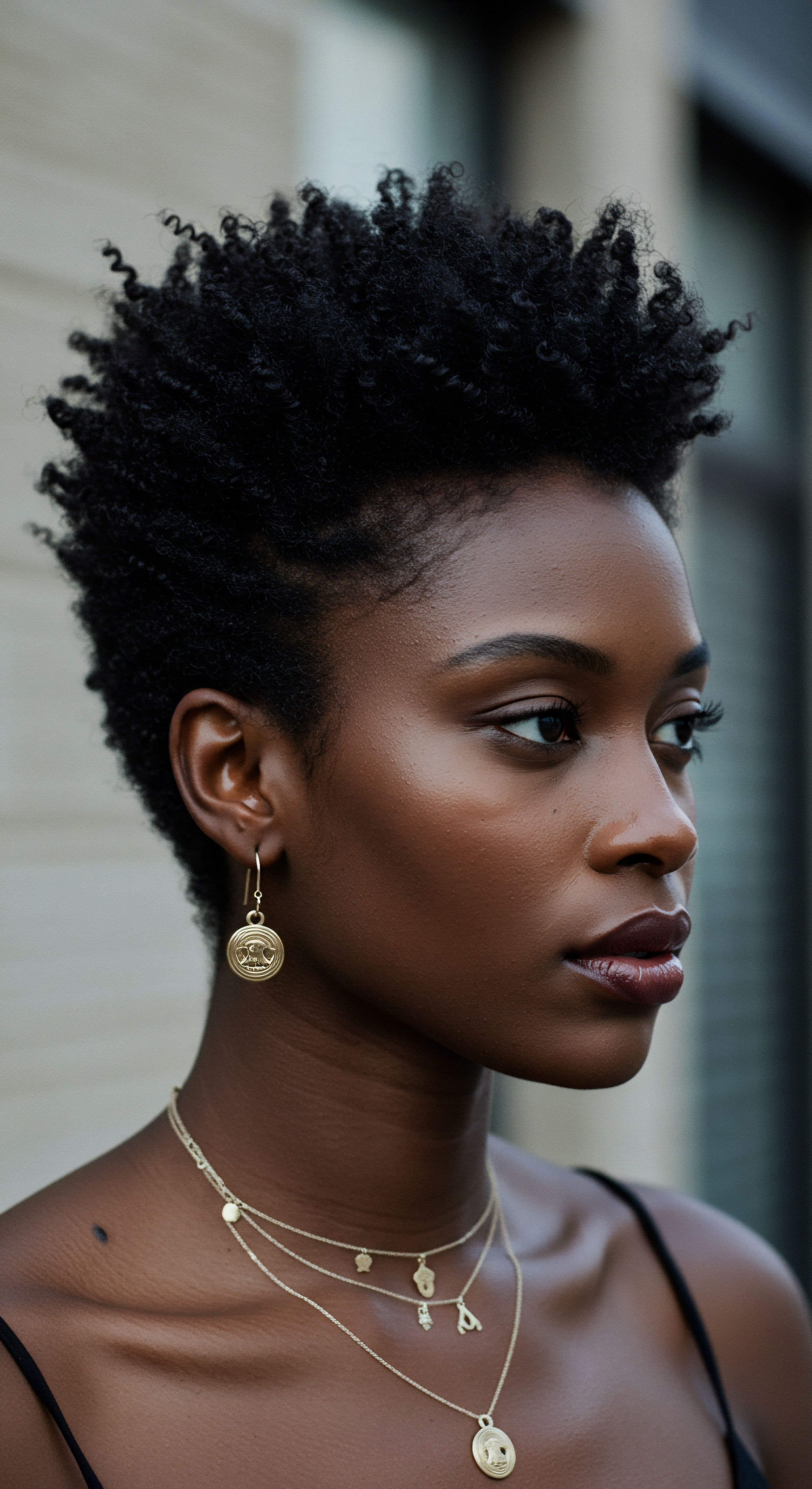
Relay
How do the deep-seated customs surrounding hair shape the very core of our contemporary self-perception? This query invites us to consider a more intricate layer of understanding, moving beyond mere practice to the profound cultural currents that flow beneath. It is here, at the confluence of history, sociology, and personal psychology, that the true impact of cultural hair practices on our modern sense of self becomes strikingly clear. This exploration transcends surface-level discussions, delving into the biological, psychological, social, and cultural factors that intertwine to form our hair identity.
Hair, in countless societies, has served as a powerful visual language, communicating status, marital availability, spiritual beliefs, and tribal affiliations. The echoes of these historical meanings continue to resonate, subtly or overtly, in how individuals perceive their own hair today and, by extension, themselves.
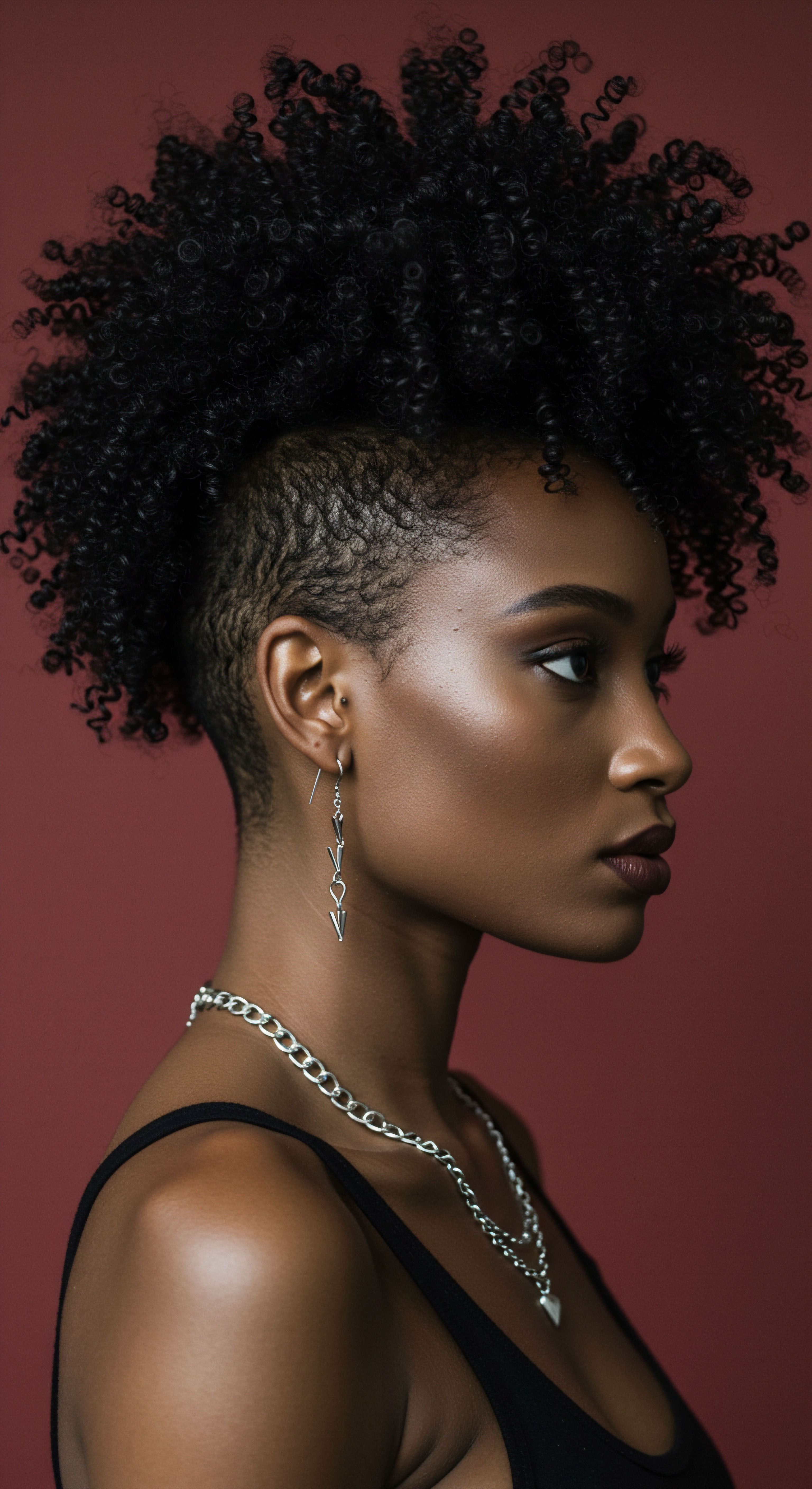
Cultural Hair as Identity Markers
Across continents and centuries, hair has functioned as a potent marker of identity, belonging, and difference. In many African societies, specific hairstyles were not merely decorative; they conveyed complex information about a person’s age, marital status, social standing, and even their spiritual connection. For instance, in the Yoruba culture of West Africa, elaborate braiding patterns could signify royalty or spiritual devotion. These practices instilled a deep reverence for hair, viewing it as a sacred extension of the self, connected to one’s lineage and community.
This historical weight means that for individuals with textured hair, the choice to wear their hair naturally or in culturally significant styles is often more than a fashion statement. It can be an affirmation of heritage, a reclamation of ancestral practices, and a visible declaration of pride in one’s identity. The modern movement celebrating natural hair, particularly within the Black diaspora, is a powerful example of this.
It is a conscious departure from Eurocentric beauty standards that historically marginalized textured hair, and a deliberate return to forms of expression that honor cultural roots. This movement, while contemporary, draws directly from the deep well of cultural memory, influencing how individuals with textured hair perceive their own beauty and value in a world that often still privileges a narrower aesthetic.
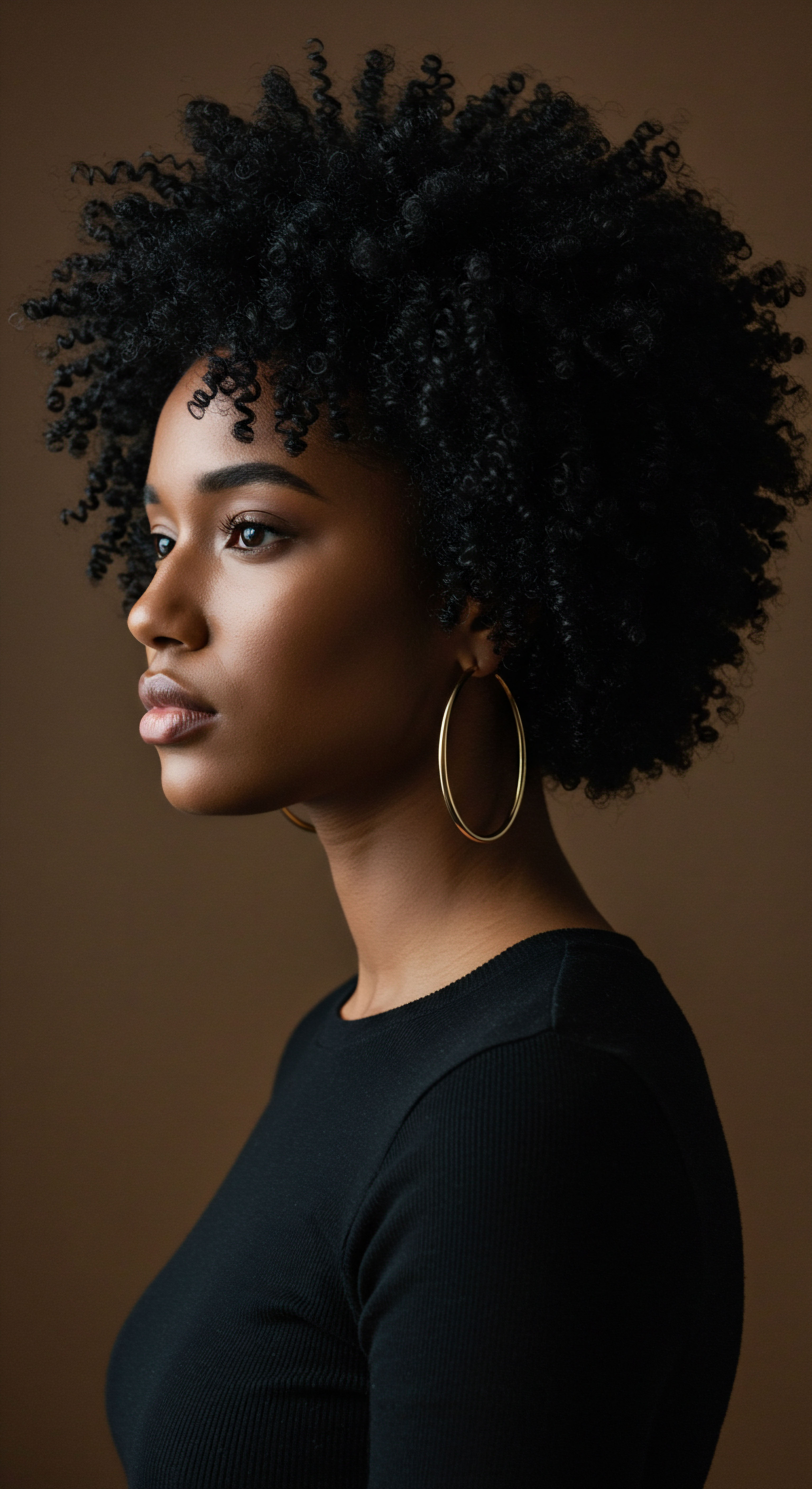
The Psychological Mirror Hair Provides
The external presentation of hair inevitably casts a reflection on our internal landscape. Our hair, whether styled with precision or left to its natural inclinations, becomes a canvas for self-expression, and the reactions it elicits from the world can significantly impact our psychological well-being. For those with textured hair, the historical and ongoing societal pressures to conform to certain beauty ideals have often created a complex relationship with their strands.
A study published in the Journal of Social Psychology found that women who perceived their hair as “good” (often aligning with straightened or looser curl patterns due to societal influence) reported higher self-esteem and lower anxiety levels related to their appearance. Conversely, those who felt their natural textured hair was not accepted often experienced lower self-worth and body dissatisfaction. This highlights a critical tension ❉ the internal desire for authentic self-expression through hair versus external societal expectations. When cultural hair practices are affirmed and celebrated, it can serve as a powerful psychological anchor, fostering a sense of belonging, confidence, and self-acceptance.
When these practices are marginalized or misunderstood, it can lead to feelings of alienation and diminished self-perception. The act of wearing one’s natural hair, particularly in environments where it might still face scrutiny, requires a profound inner strength and a robust sense of self-worth.
Hair serves as a dynamic interface between our inner world and the external gaze, profoundly shaping how we see ourselves and are seen by others.

Societal Norms and Professional Spaces
The influence of cultural hair practices extends into the most formal of settings, particularly professional environments. For decades, and even currently, individuals with textured hair have faced discrimination based on their natural styles. The expectation to conform to “professional” aesthetics, often implicitly or explicitly defined by straight hair, has led many to chemically alter their hair or conceal it under wigs. This pressure to assimilate carries a heavy psychological toll, forcing individuals to choose between cultural authenticity and professional advancement.
However, there is a growing movement towards greater acceptance and celebration of textured hair in all spaces. Legislative efforts, such as the CROWN Act in the United States, which prohibits discrimination based on hair texture and protective styles, are a testament to this shift. These legal frameworks acknowledge the historical bias and seek to dismantle systemic barriers. Such legal and social changes, while slow, have a tangible impact on self-perception.
When individuals feel secure in expressing their cultural hair identity without fear of professional repercussions, it reinforces a sense of belonging, reduces anxiety, and strengthens their overall self-esteem. The freedom to wear one’s hair naturally in the workplace signals a broader societal recognition and respect for diverse cultural expressions, thereby positively influencing individual self-perception and confidence.
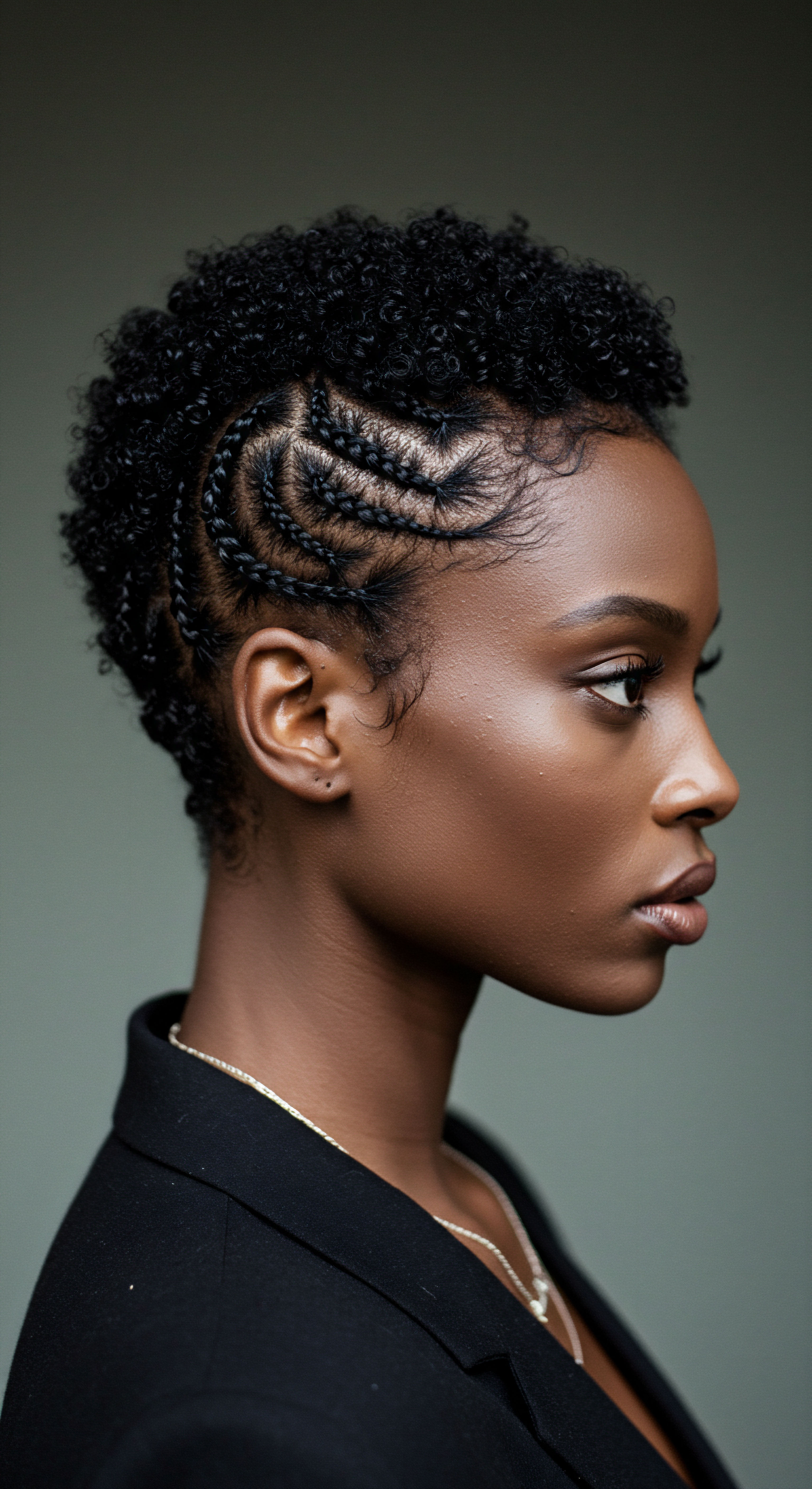
Intergenerational Transmission of Hair Lore
The relay of cultural hair practices is often an intergenerational dialogue, a quiet transmission of wisdom, techniques, and values from elder to youth. This passing down of hair lore—the stories, the remedies, the styling methods—is not merely about teaching how to braid or detangle; it is about conveying a sense of identity, resilience, and continuity. A grandmother teaching her granddaughter how to oil her scalp, or an aunt sharing the secrets of a perfect twist-out, is doing more than just hair care; they are transmitting cultural heritage.
This shared experience builds strong familial bonds and reinforces a sense of collective identity. The rituals performed together, often involving hours of patient work and conversation, become formative experiences that shape a young person’s relationship with their hair and, by extension, their self-image. When these practices are rooted in celebration and affirmation, they foster a positive self-perception, grounding individuals in their cultural lineage.
Conversely, if past generations internalized negative messages about their hair, these anxieties can also be inadvertently passed down. The contemporary movement to reclaim and celebrate textured hair actively seeks to heal these intergenerational wounds, replacing them with narratives of pride and beauty.
| Aspect of Influence Cultural Affirmation |
| Description of Impact Wearing styles that honor heritage connects individuals to their roots and community. |
| Self-Perception Outcome Increased pride, belonging, and cultural connection. |
| Aspect of Influence Societal Acceptance |
| Description of Impact Perceptions of hair in public and professional spheres. |
| Self-Perception Outcome Confidence and reduced anxiety when accepted; self-doubt when discriminated against. |
| Aspect of Influence Intergenerational Learning |
| Description of Impact Passing down hair care traditions and values. |
| Self-Perception Outcome Stronger identity, resilience, and positive body image. |
| Aspect of Influence Personal Expression |
| Description of Impact Hair as a canvas for individuality and creativity. |
| Self-Perception Outcome Enhanced autonomy, self-confidence, and creative satisfaction. |
| Aspect of Influence The interplay of these factors creates a dynamic relationship between hair practices and individual self-perception. |
The cultural significance of hair is not a relic of the past; it is a living, breathing force that continues to shape modern self-perception. Through historical practices, psychological responses to societal norms, and the powerful transmission of intergenerational knowledge, hair stands as a testament to who we are, where we come from, and how we choose to present ourselves to the world. The journey to a positive self-perception, for many with textured hair, is inextricably linked to the ongoing dialogue with their cultural hair heritage.
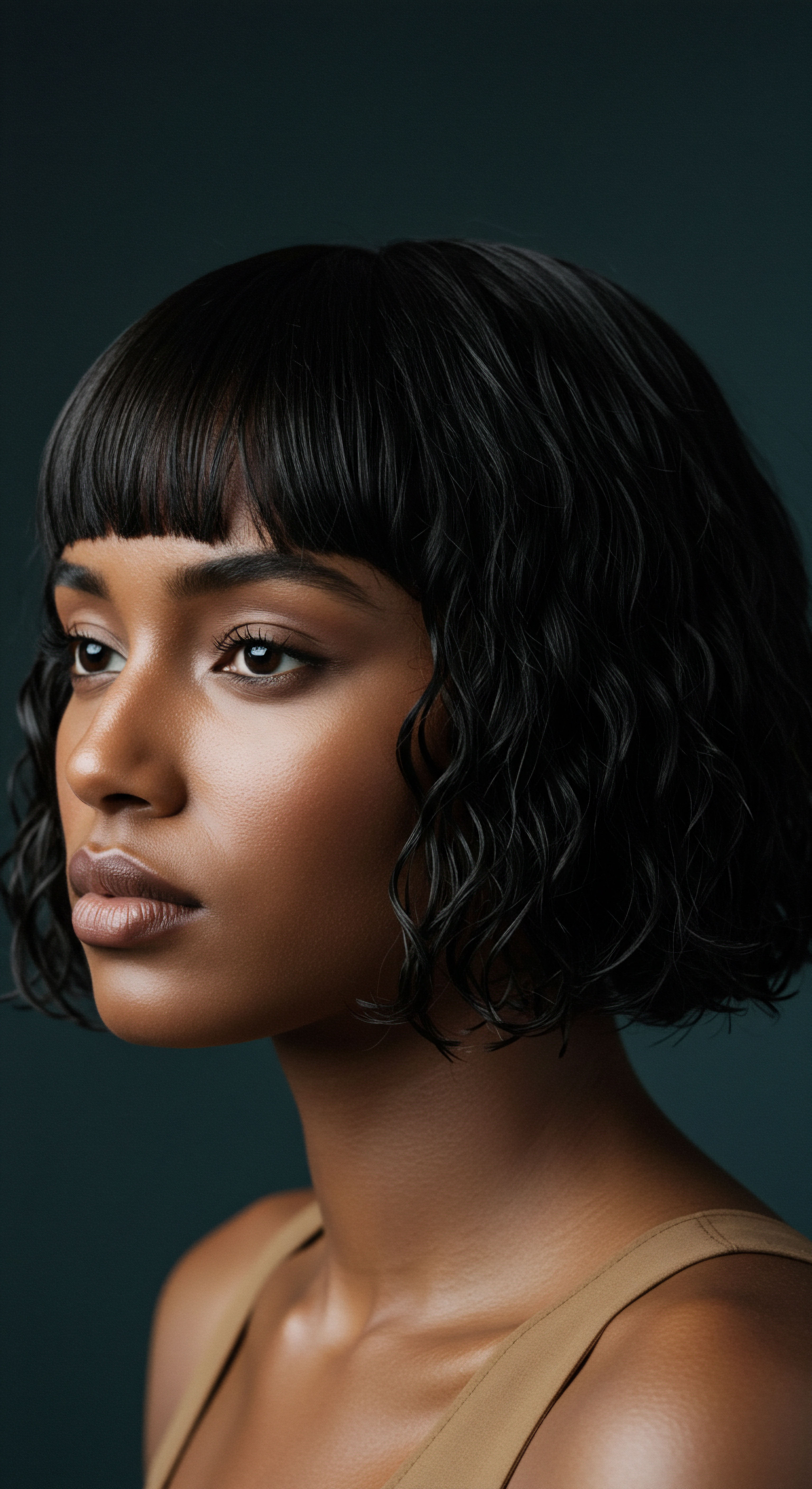
Reflection
As we consider the profound journey from the follicle’s quiet beginnings to the bold statements hair makes in the world, a deeper truth comes into focus. Our hair, with its unique textures and forms, is more than simply an accessory; it is a living bridge between our inner self and the external world, a conduit for both personal expression and collective memory. The choices we make about our hair, whether informed by ancestral customs or contemporary aesthetics, ripple through our self-perception, shaping the quiet conviction with which we navigate our days.
This dialogue between cultural practice and individual identity is ongoing, a continuous conversation that adapts and transforms with each generation. The resilience inherent in textured hair mirrors the resilience of the communities that have celebrated it for centuries, often against prevailing norms. In this ongoing exploration, we find not only a deeper understanding of our strands but also a more compassionate appreciation for the diverse beauty that surrounds us.

References
- Ruffin, A. R. (2018). The Impact of Hair Discrimination on the Psychological Well-Being of Black Women. Journal of Social Psychology, 158(5), 541-555.
- Byrd, A. D. & Tharps, L. L. (2014). Hair Story ❉ Untangling the Roots of Black Hair in America. St. Martin’s Press.
- Mercer, K. (1994). Welcome to the Jungle ❉ New Positions in Cultural Studies. Routledge. (Chapter on Black Hair Culture)
- Banks, I. (2000). Hair ❉ A Cultural History. Rizzoli.
- Tate, S. (2009). Black Beauty ❉ African American Women and the Politics of Race, Gender, and Appearance. Ashgate Publishing.
- Elias, J. (2008). Hair ❉ Its Power and Meaning in Asian Cultures. Columbia University Press.
- Hunter, M. (2011). Buying Beauty ❉ The Ethnic Beauty Culture in America. University of Texas Press.